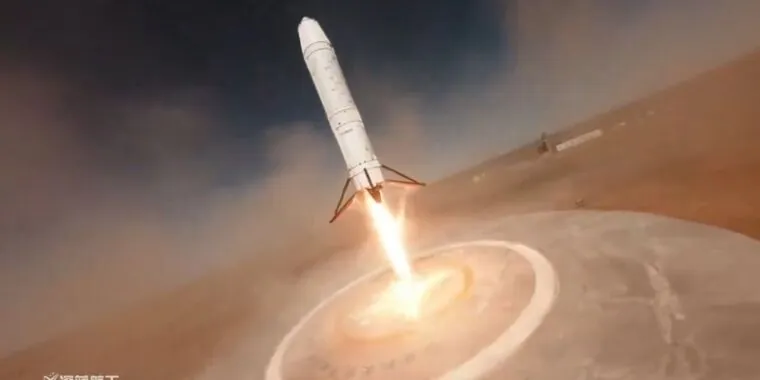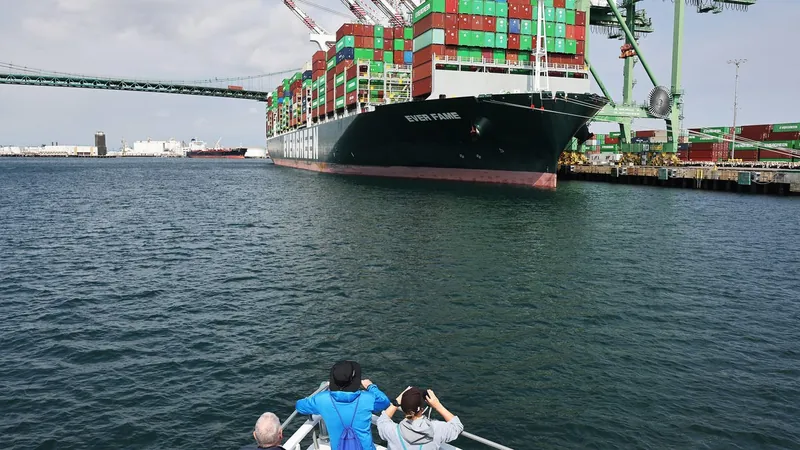
Stunning Footage: Chinese Rocket's Dramatic Test Flight Ends in Fiery Crash!
2024-09-23
Chinese Rocket Test Flight Incident
A Chinese space startup, Deep Blue Aerospace, conducted a remarkable "high-altitude" test flight with its Nebula-1 rocket on Sunday, launching the vehicle to an impressive altitude of approximately 5 kilometers. However, what was meant to be a successful landing at the Ejin Banner Spaceport in Inner Mongolia turned into a dramatic spectacle as the rocket encountered issues just before touchdown and erupted into a fireball.
Flight Details and Company Response
This test flight lasted approximately two and a half minutes, showcasing the challenges of vertical landing technology. Despite the unfortunate end, Deep Blue Aerospace stands apart from its competitors due to its commitment to transparency. The company issued a detailed statement shortly after the incident, outlining the objectives of the test and providing a preliminary analysis of what went wrong.
Dramatic Footage and Data Collection
The release included stunning images and video footage, captured from both the ground and nearby drones, displaying the fiery landing attempt—a breathtaking sight for space enthusiasts and a significant moment in China's aerospace development. Such openness is becoming a refreshing trend among Chinese space companies, which have traditionally kept details under wraps.
Test Flight Outcomes and Future Plans
Deep Blue Aerospace reported that the test provided invaluable data, achieving 10 out of 11 major objectives. The company has ambitious plans to conduct another high-altitude test flight as early as November, aiming to continue refining its technology and processes.
Industry Context and Comparisons
Deep Blue Aerospace is among several budding aerospace firms in China, including notable names like Linkspace, iSpace, Galactic Energy, and Space Pioneer, all striving to replicate the success of US-based SpaceX with vertical take-off and landing technology. Such experiments harken back to SpaceX's own trailblazing tests with the Grasshopper vehicle, which laid the groundwork for modern reusable rockets.
Technical Specifications of Nebula-1
The Nebula-1 rocket itself has a diameter of 3.35 meters (11 feet), slightly smaller than SpaceX's Falcon 9, which measures 12 feet in diameter. The Nebula-1 will be powered by kerosene-liquid oxygen engines, mirroring the propulsion system used by Falcon 9. Given the challenges faced during this test, the timeline for an orbital flight with Nebula-1 has been pushed back, likely not happening before 2025.
Conclusion and Future Outlook
Unlike SpaceX, which conducted its vertical landing tests after beginning orbital launches, Deep Blue Aerospace is testing its landing technology in parallel with its development process. With their innovative approach and ongoing tests, we can expect thrilling developments from Deep Blue Aerospace—including perhaps another heart-stopping flight in the near future. Keep your eyes peeled for their next venture into the skies!





 Brasil (PT)
Brasil (PT)
 Canada (EN)
Canada (EN)
 Chile (ES)
Chile (ES)
 España (ES)
España (ES)
 France (FR)
France (FR)
 Hong Kong (EN)
Hong Kong (EN)
 Italia (IT)
Italia (IT)
 日本 (JA)
日本 (JA)
 Magyarország (HU)
Magyarország (HU)
 Norge (NO)
Norge (NO)
 Polska (PL)
Polska (PL)
 Schweiz (DE)
Schweiz (DE)
 Singapore (EN)
Singapore (EN)
 Sverige (SV)
Sverige (SV)
 Suomi (FI)
Suomi (FI)
 Türkiye (TR)
Türkiye (TR)